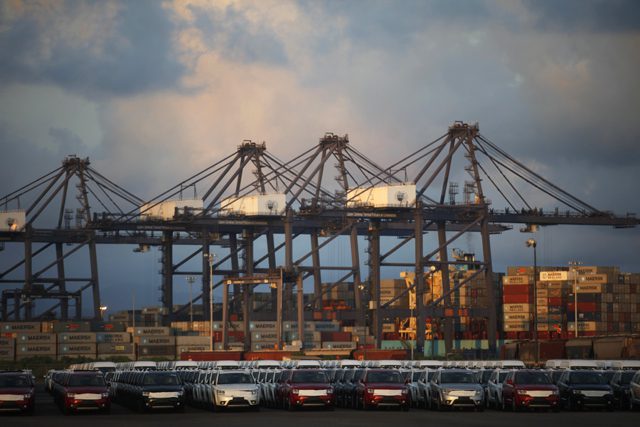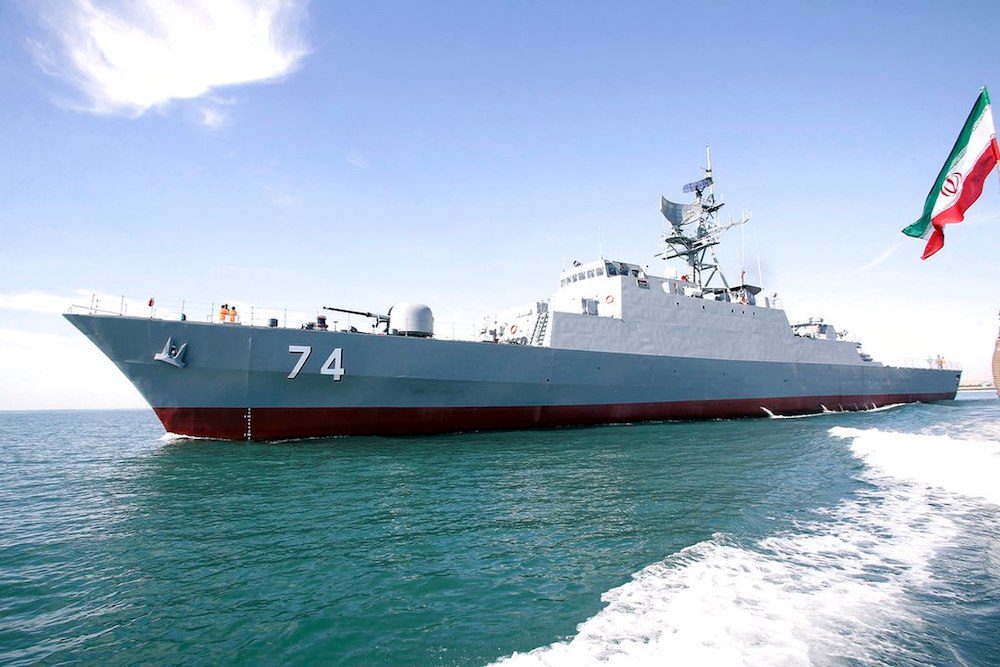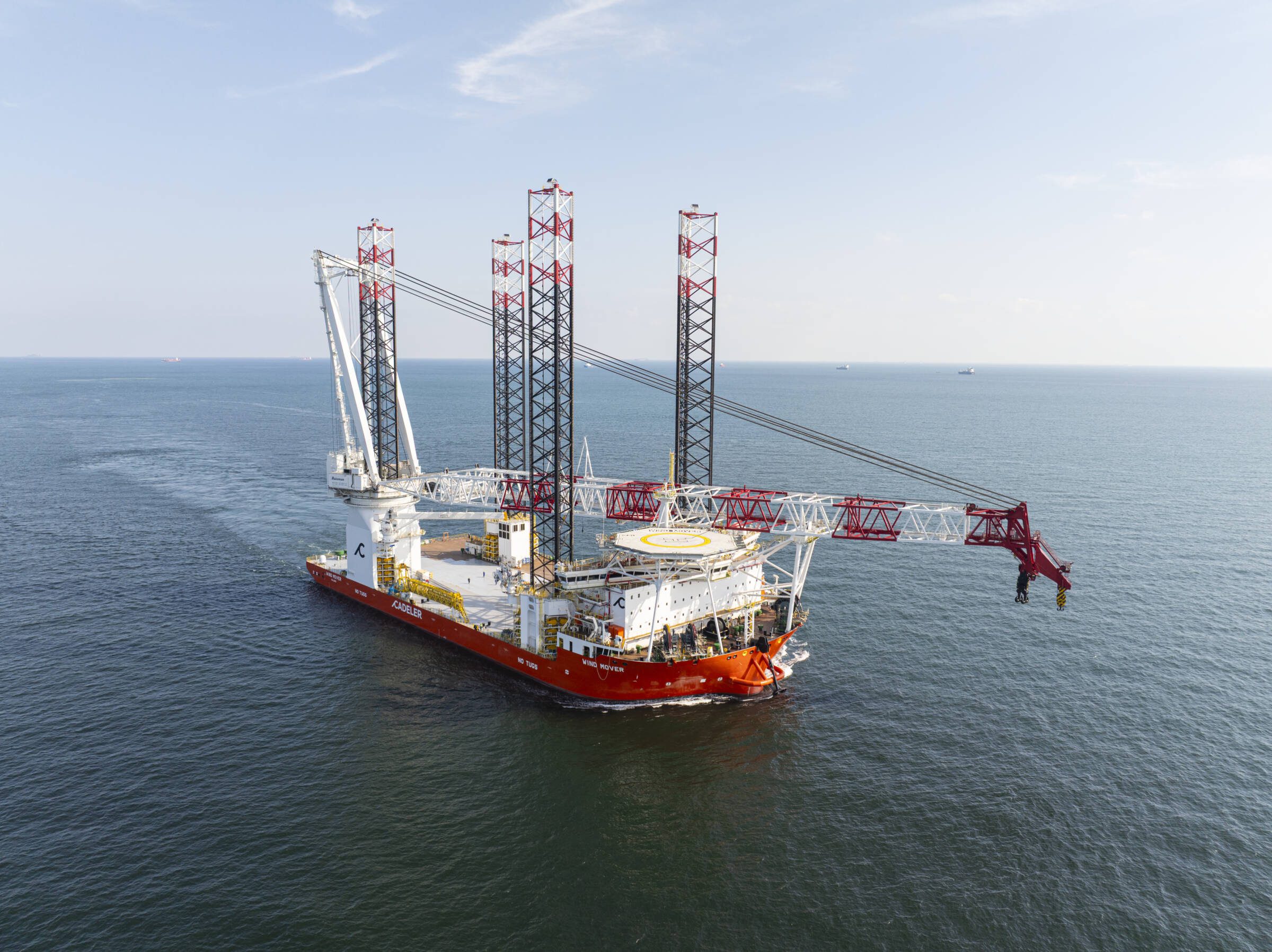Cars and containers are seen in the port of Lazaro Cardenas November 20, 2013. (c) REUTERS/Edgard Garrido
 By Dave Graham
By Dave Graham
LAZARO CARDENAS, Mexico, Jan 1 (Reuters) – When the leaders of Mexico and China met last summer, there was much talk of the need to deepen trade between their nations. Down on Mexico’s Pacific coast, a drug gang was already making it a reality.
The Knights Templar cartel, steadily diversifying into other businesses, became so successful at exporting iron ore to China that the Mexican Navy in November had to move in and take over the port in Lazaro Cardenas, a city that has become one of the gang’s main cash generators.
This steelmaking center, drug smuggling hot spot and home of a rapidly growing container port in the western state of Michoacan occupies a strategic position on the Pacific coast, making it a natural gateway for burgeoning trade with China.
Lazaro Cardenas opened to container traffic just a decade ago, and with a harbor deep enough to berth the world’s largest ships, it already aims to compete with Los Angeles to handle Asian goods bound for the U.S. market.
But that future is in doubt unless the government can restore order and win its struggle with the Knights Templar, who took their name from a medieval military order that protected Christian pilgrims during the Crusades.
Mexico’s biggest producer of iron ore, Michoacan state is a magnet for Chinese traders feeding demand for steel in their homeland. But the mines also created an opportunity for criminal gangs, such as the Knights Templar, looking to broaden their revenue base into more legitimate businesses.
“The mines were mercilessly exploited, and the ore was leaving. But not in rafts or launches – it was going via the port, through customs, on ships,” said Michoachan’s governor, Fausto Vallejo, soon after the Navy occupied the port on Nov. 4.
Already a thriving criminal enterprise adept at corrupting local officials and squeezing payments from businesses, developers and farmers, the Knights took to mining with aplomb, according to entrepreneurs and miners working around the port.
Hidden behind mountain roads about an hour from Lazaro Cardenas, one small town mustered hundreds of trucks this year to lead the gang’s scramble to the port, a local miner said.
That town – Arteaga – is the birthplace of Servando Gomez, the former school teacher who leads the Knights Templar.
Gomez understood the potential of Lazaro Cardenas, which was a village best known for its coconuts until the government decided to build a steelworks there 40 years ago.
The gang’s trucks sped around Michoacan’s iron mines to supply Chinese buyers, helping to push ore exports to 4 million tonnes by October from 1-1.5 million tonnes a year previously.
Their business rests on several pillars, according to accounts of local officials, miners and entrepreneurs.
Firstly, the Knights controlled how the ore moved, having imposed protection charges on local transport unions after becoming the dominant gang in the city a few years ago.
It also helped local prospectors stake claims to mine areas either unclaimed by others or beyond the control of the existing concession-holders. Then the Knights took their cut.
Finally, the gang pressured customs officials to ensure the ore passed through the port smoothly.
“Most of the groups mining are Knights Templar or belong to them. They have the whole chain,” a local official told Reuters.
Fueled by the appetite of Chinese buyers, about half the mining in the area was done without proper permits this year, said the official, speaking on condition of anonymity.
Those who talk openly can pay dearly. In April, an official at steel maker ArcelorMittal who local businessmen said had reported illegal mining to authorities was shot dead.
One prospector from Arteaga, who asked to remain anonymous, said he ran a mine selling unprocessed iron ore to Chinese traders for $32 per tonne, giving him a profit of about $5-7 per tonne. By the time it reached China, the buyers could expect to sell the ore for a profit of around $15 per tonne, he estimated.
Because the Knights Templar control much of the local iron supply, the gang has pressured Chinese buyers to purchase ore from them or face reprisals, said a Mexican government security official who spoke on condition of anonymity.
The combination of organized crime and Chinese buying of Mexican iron ore poses a problem for President Enrique Pena Nieto, who has gone out of his way to cultivate ties with China.
China’s President Xi Jinping has been in office only since March, but Pena Nieto has already met him three times. In June, Pena Nieto welcomed Xi to Mexico, signing a string of economic cooperation deals. But at the top of the agenda was how to narrow the massive trade imbalance between the two nations.
Bilateral trade was worth $62.7 billion in 2012, up from just $431 million two decades ago, Mexican data shows. But 90 percent is accounted for by Chinese exports to Mexico, most of it goods such as computers and component parts.
CHAOS, LOCKDOWN, MORE CHAOS
Much of that trade goes directly through Lazaro Cardenas.
In 2012, it had the biggest rise in traffic in North America’s 20 top container ports, handling 1.2 million 20-foot equivalent units, or teus.
Most of the port is still a dusty plain above which birds of prey soar in stifling heat. In a few years, though, projects started by Maersk-unit APM Terminals and Hutchison Port Holdings could expand its capacity to about 8 million teus – the amount moved in 2012 by the continent’s top container hub, Los Angeles.
But Michoacan is not California.
Seven years ago, then-President Felipe Calderon began a nationwide crackdown on organized crime in Michoacan, sending in the army to tackle increasingly violent drug cartels.
Over 80,000 people have since died in gang-related killings across Mexico, and assurances Pena Nieto gave that he would stop the rot when he took power a year ago are wearing thin.
Although parts of Mexico have become safer since Pena Nieto took office, Michoacan has fallen into even more chaos.
Over half of the state lives in poverty. Traditional work like resin production is dying out due to competition from China and elsewhere. That creates new recruits for organized crime.
In October, a local bishop likened Michoacan to a failed state. A few days later, assailants temporarily knocked out power for hundreds of thousands in the state with a string of attacks on installations of the national electricity utility.
Many blamed the Knights, though signs posted in Michoacan accused a small rival gang of staging the attack.
The Navy took over the port authority and reinforced Lazaro Cardenas shortly afterward. All the local police and customs officials were initially suspended and the caravans of trucks carting ore started to thin out.
But the lull is unlikely to last unless the government can regain control of the city beyond the port gates and open up mining to legitimate prospectors not controlled by the gang.
Miners complain that the main concession-holders such as ArcelorMittal, which did not respond to requests for comment, use only a fraction of their land and are reluctant to let others mine it. The Knights have turned that dispute into money.
Days after the Navy moved in, state governor Vallejo said criminal enterprise around Lazaro Cardenas could be worth up to $2 billion a year – or about half Michoacan’s 2012 budget.
‘EVERYONE IS PAYING’
Some involved in the mining industry say the area has become safer since the Knights Templar started to take control.
But the facts suggest otherwise: government figures show kidnappings in Michoacan reached a record level in 2013, and murders climbed to a 15-year peak.
Gomez has appeared in several YouTube videos trying to portray his Knights Templar as defenders of Michoacan.
In one posted in August, he said the Knights had provided paid protection at the request of avocado farmers but that they did not extort businesses. However, he also conceded that some “foolish” members of his gang probably had engaged in extortion.
The Knights’ power in Lazaro Cardenas is often subtle.
Unlike parts of northern Mexico living under the threat of violence, the restaurants, taco stands and bars on the city’s main palm-lined boulevard are alive with people as night falls.
Some residents say they are not squeezed by the cartel, and big companies say they can operate without fear of extortion.
“We don’t pay a cent to anyone,” said Jose Zozaya, head of Kansas City Southern Mexico, which operates the rail link that connects the port with the United States.
But others quickly vent their anger about the Knights.
“Everyone is paying, but they won’t tell you,” said a local entrepreneur. “The people here are destroyed.”
The port is no stranger to crime, and during Calderon’s presidency it became a big entry point for chemicals from China and other parts of Asia used to make methamphetamine. Some locals say chemicals have even been used to pay gangs for the iron ore.
Asked if Mexico had discussed the iron ore issue with Beijing, a senior government official said: “The Chinese government doesn’t always know what the companies are doing. The occupation of the port … was the control measure adopted.”
Hua Chunying, a Chinese foreign ministry spokeswoman, said she was unaware of the situation in Lazaro Cardenas, adding: “But I can tell you that the Chinese government has consistently educated and asked Chinese companies to respect the law in other countries when they carry out business and trade cooperation.”
Successful Chinese firms are growing quickly in the region.
Since setting up in 2009, Desarrollo Minero Unificado de Mexico (DMU), a Chinese iron mining company in Lazaro Cardenas, has gone from three employees to 600 nationwide, nearly all of them Mexicans, Director General Luis Lu told Reuters.
With more than 30 concessions, Lu said his company mined all of its own iron and had not had any trouble with organized crime. He said he could not say how other Chinese firms fared.
Still, Chinese success in Michoacan has caused friction with the Knights Templar. In the August YouTube video, gang leader Gomez had some strong words for them.
“We have an excessive invasion of Chinese. An excess of Chinese,” he said, surrounded by armed men. “It may suit the interests of various corporations, I don’t know. But they’re here with us now. And these people have their mafias too.”
(c) 2014 Thomson Reuters, All Rights Reserved
Tags:

 Join The Club
Join The Club











